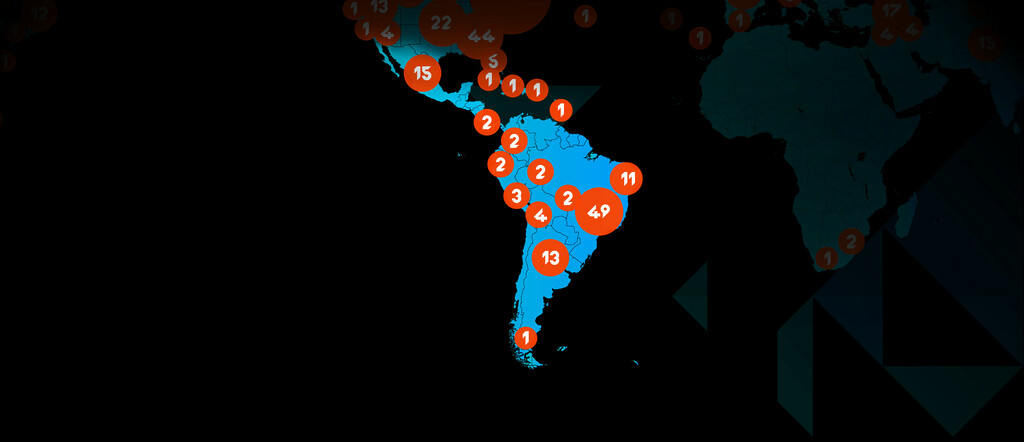
World Cup 2014 – Four Things We Learned From the Group Stages
1. Live streaming football is a global phenomenon
This World Cup brought with it a lot of innovative changes, starting with the rebirth of offensive football (more goals (136) scored in the group stage of this World Cup than at any other World Cup and at a rate (2.83 per game) not seen since the 1950s), the emergence of CONCACAF as a powerhouse confederation (Costa Rica top of its group, US emerging from the Group of Death and onto the next round and Mexico also advancing ), goal line technology and referees using vanishing foam to mark the proper distance from the ball in free kicks (used in Brazil for several years but a first in the World Cup).

When it comes to online video, this “Copa” is probably the first time where consumers in almost every country are able to stream the games online live. While the rights to stream the World Cup remain different in every country, consumers took notice and have been embracing this new medium across the board. Because of the time zone differences, many networks saw odd traffic spikes of live video streams during normal business hours. In the US, this culminated in US-Germany match which saw both ESPN and Univision (served by the NeuLion platform) rise into the top 10 online video sites for the duration of the match, consuming more than 5% of all video, easily surpassing all other live streaming sites. Of course, this could have been because of the “hall pass” given by Jurgen Klinsmann to all US fans.

Qwilt US Operator Online Video Ranking during US-Germany match
2. When the local team plays, networks better be ready
Video streaming is especially big in countries that actually sent their squads to Brazil. And when the national team takes the pitch, if you’re a network operator, you better prepare your network for an influx of traffic as that’s when most online viewing takes place.
In the UK, for example, even though the national team had a less than stellar tournament, every time the Three Lions stepped onto the pitch, it seemed that nearly every British citizen was streaming the match live on BBC. For example, during England’s heartbreaking 1-2 loss to Italy, BBC Live topped the online video charts and consumed over a third of all video traffic in multiple UK networks!

Aggregated Qwilt Video Analytics data from UK Operators during UK World Cup Games
France is having a great Cup so far, with a tremendous team composed of mostly young talent, which cruised through the group stage. Streaming also had its moment in the sun in France as well. When Les Bleus annihilated Switzerland 5-2, online traffic on the local TF1 site surged, claiming the #2 spot of all video sites in France, behind only YouTube, whereas on a normal day TF1 trends outside the top-10.

Qwilt online video ranking in France during the FR vs. SW World Cup Game
In the host nation, Globo, the leading content site in Brazil owns the rights to stream the matches online and has been doing a great job. Surprisingly, however, the most streamed match was not the opening match, nor the tough 0-0 tie against Mexico but rather the incredible 5-1 trouncing of Spain by the Netherlands. Brazilians really appreciate great futbol and this match was definitely one of the highlights of the tournament so far. The graph below, taken from a Qwilt Video Fabric Controller inside a Brazilian operator, shows Globo’s live traffic for the weeks leading up to World Cup as well as during the group stage with the maximum amount of video being streamed live for the Netherlands-Spain match.

3. When it comes to quality, sometimes the problem is not the network
Here in the US, ESPN has been doing a pretty good job streaming all the matches via the Watch ESPN app and for the most part quality has been pretty good with few buffering events. That changed, however, during the US-Germany match where many viewers starred at an error screen instead of the live stream. Based on reports in the press, the issue was mostly likely related to the infrastructure that handles the authentication process, which ESPN requires to access the service, rather than the actual network./p>

4. Qwilt is also doing its part in this World Cup (or Live Stream Caching Really Works)
Earlier this year, Qwilt introduced the first ever Live Stream Cache for online video. The first event that operators used it for was the Super Bowl, but in the World Cup the solution is on display on a daily basis and scoring in every match so to speak. Our best results so far came in the US-Portgual match. We were delivering live ESPN streams from cache in almost every US operator where we are deployed. In one US operator, we had a system that was delivering 74% of Watch ESPN volume from a local cache to nearby subscribers greatly improving the user experience. It was probably as close as we’ll get to actually being on the pitch but we are very proud of the help we provided so US fans can support their team and get team USA to the next round.

The round of 16 is almost upon us – as Bart Scott (American Football star) says “WE CAN’T WAIT” to keep on streaming.
Ready to take the next step?
We have a team of content delivery experts ready to answer your questions.
Related resources

Event
SportsPro Live 2023

Event
SportsPro OTT USA 2023

News
It’s all about the CDN, stupid

Blog




